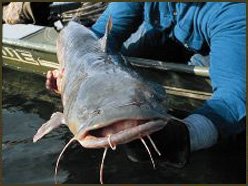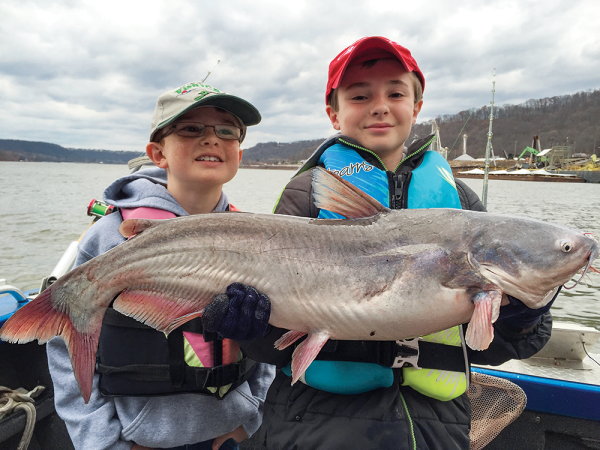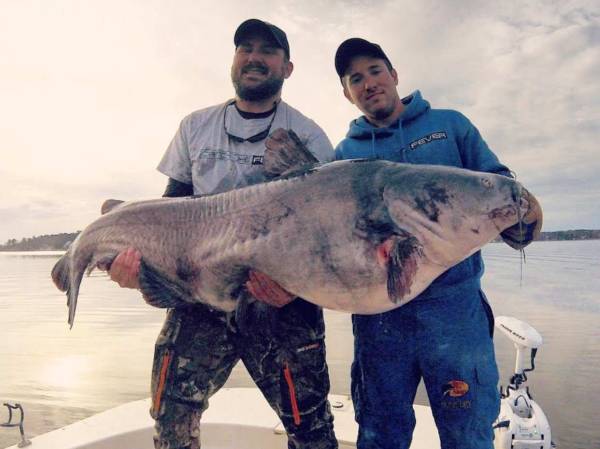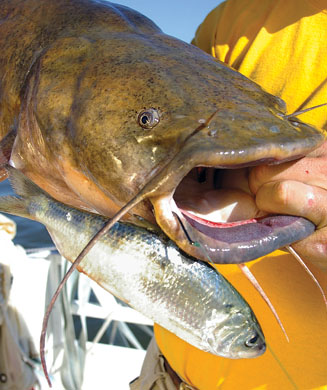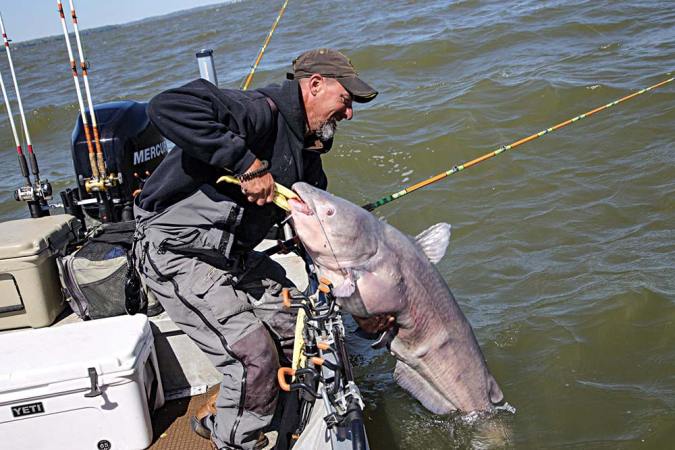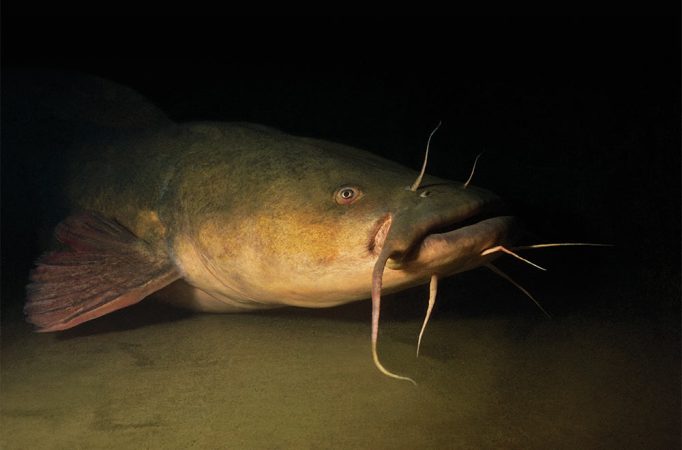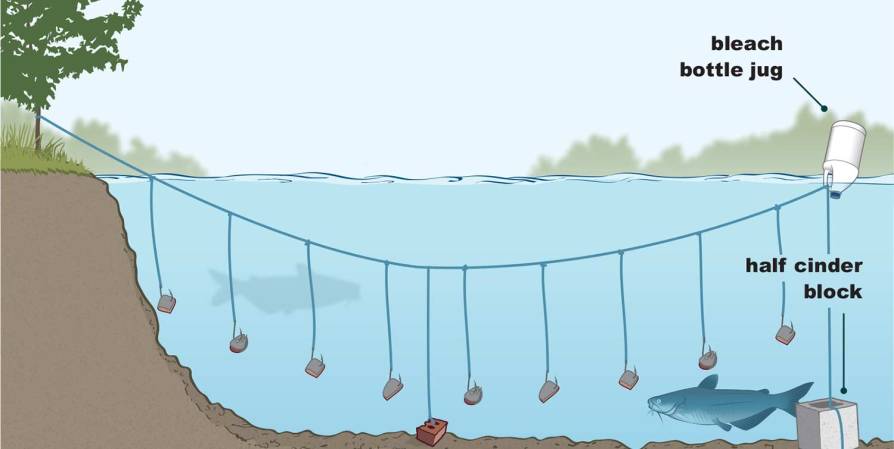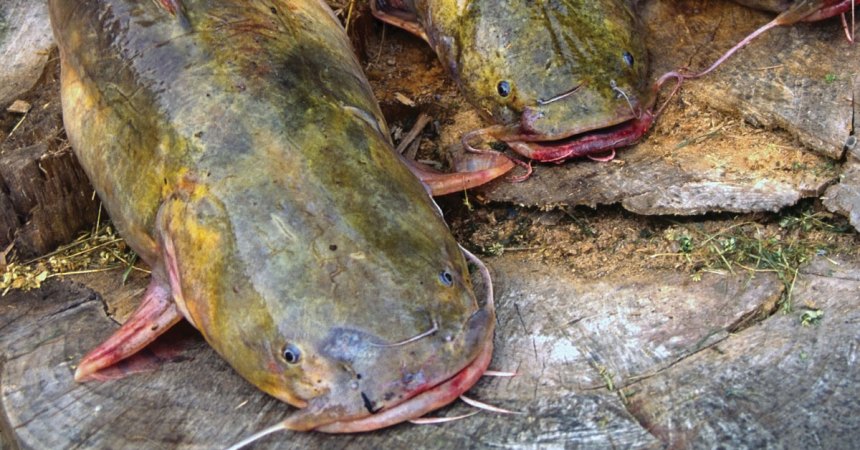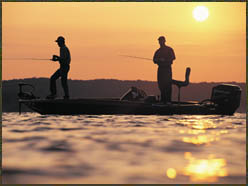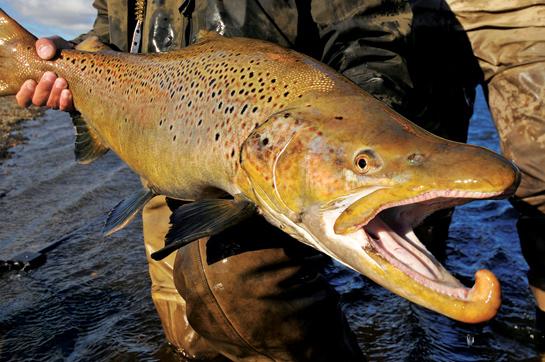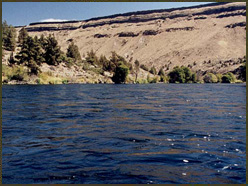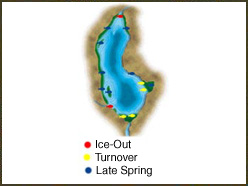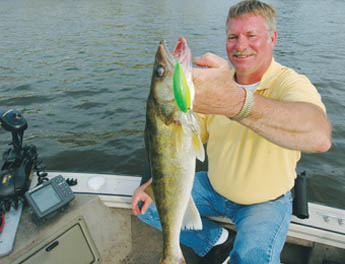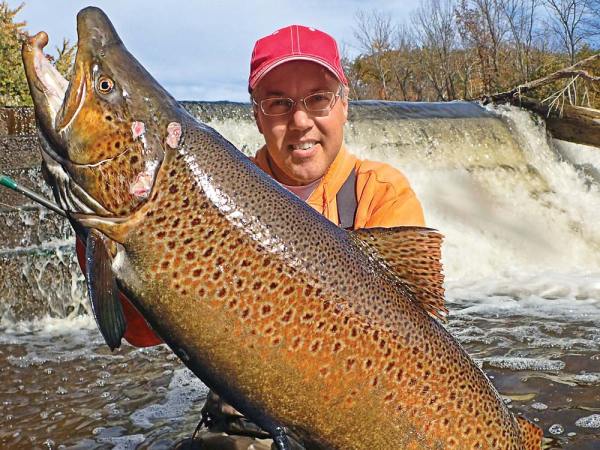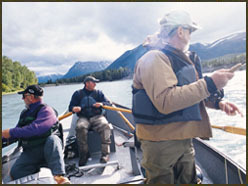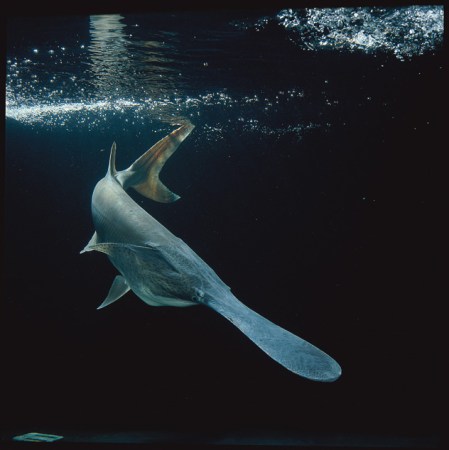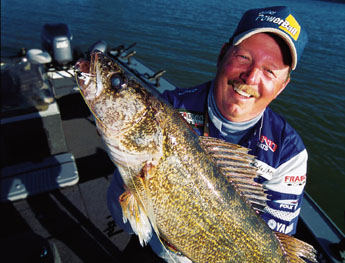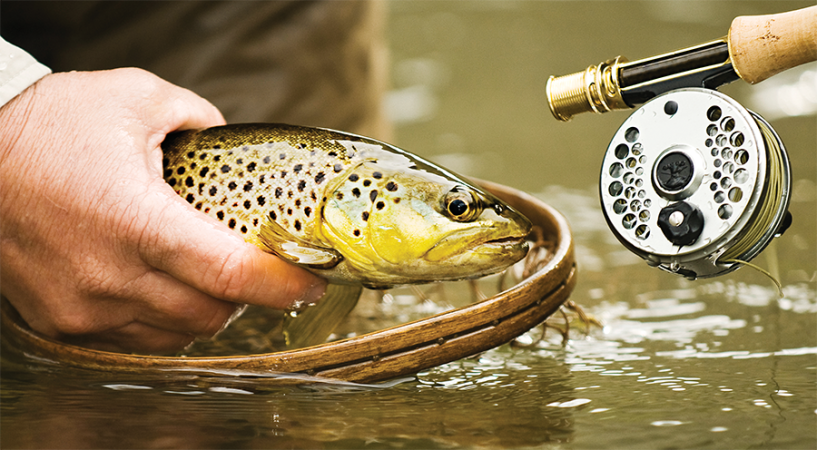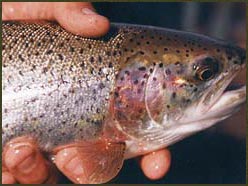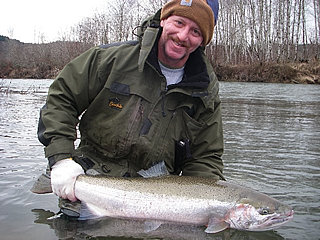Mention Bill Dance’s name in a crowd of anglers and an image of a bass pops up in their minds automatically. It’s understandable, since most episodes of the Tennessee angler’s Fishing With Bill Dance television series are devoted to bass fishing. But while bass may be the stars of Dance’s TV shows, after prime time is over he’s just as likely to be found fishing for blue catfish in the Mississippi River near Memphis.
Catfish, especially the big blue variety that roam the waters of the Mississippi during the summer months, caught and held Dance’s fancy long ago. And why not? These blues can weigh in excess of 100 pounds, and the Tennessee fisherman regularly tangles with 40- to 50-pound brutes in the stretch of the Mississippi he fishes. Dance has found that one of the best ways to coax big catfish from summer through fall is by drifting and bouncing baits through their lairs: dam tailraces, behind wing dams or anywhere there is a clash of currents and plenty of baitfish. While hundreds of hefty blues are caught from the bank or anchored boats each year, Dance favors drift-fishing. His rationale is that blue catfish are roamers in warm weather and they move from hole to hole; Dance enjoys hunting for them. Once he’s ready to fish, he uses a bow-mounted electric trolling motor both to regulate the speed of his boat and to keep it in position when he is fishing current breaks-edges where currents of fluctuating speeds meet.
Roller-Coastin’ for Cats
What Dance describes as “a roller-coaster bottom,” is an ideal gathering place for big catfish. Here, the bottom undulates up and down significantly. Dance can detect these wavy bottoms with his fishing sinker as he drifts, as well as with his boat’s depth finder (see Illustration 1, next page).
After some distance beyond one of the tops in the roller-coaster bottom, the water approaches the next top, the current tends to go down and then it briefly reverses itself before rising back up again. Thus, a current of slower water is created close to the fast-moving water. The big catfish will tend to hold in this slower, reversing current, and Dance makes sure his bait falls into such eddies as he drifts along. The bait should be riding just above the bottom, so the rod tip is held a bit higher as he drifts over the tops and then is lowered again beyond them.
“Besides the type of bottom, the depth is critical, so I watch my depth finder,” says Dance. “The depth finder transducer is mounted to the trolling motor so I can see what’s going on just under me as I pass over. My best drifts come at about twenty-five to forty feet deep, although sometimes twenty-five to thirty-five or even thirty-five to forty-five feet deep is better.” Once he starts getting bites at a particular depth, Dance tries to stay in that depth elsewhere, providing there is a roller-coaster bottom.
Winging It
Another of Dance’s favorite drift-fishing approaches is in the tailraces of dams, especially the stretches with wing dams. Typically, wing dams are constructed of quarried rock or concrete and extend into the river from the bank. Their purpose is to slow down the current and prevent erosion. The eddy zones behind wing dams are catfish magnets (Illustration 2).
Here, Dance first determines where the still water (the center of the eddy behind the dam) meets the slightly faster current that circles it. Blues will hold in the conflicting currents of this area, which could be extensive depending on the size of the wing dam. Drift-fishing the area or using the trolling motor to work through areas of the circular flow will help to determine where the catfish are.
Find the Hidey Hole
It often pays to work the area just downstream from the submerged portion of a wing dam (Illustration 3). Big cats will hug the bottom here, out of the fast current. Again, depending on water depth, it may be neceessary to lower the rod tip appreciably and peel additional line off the reel to keep the bait near the bottom.
Go for a Ride
The Mississippi River and its tributaries offer a broad range of structure and cover, sometimes in the span of a couple of river miles (Illustration 4). All rivers have holes or deeper sections occupied by catfish that wait for baitfish or food to tumble through. Often, but not always, catfish will position themselves at the upriver ends of such holes, out of direct current and at the head of the chow line. The deeper holes are especially favored hangouts of blue catfish during colder weather.
Shoals, where a shallower rocky spot extends out to near the main current, also should be targeted. Directly above the shoal is a dead-water area. The key here is current, or, rather, a current flow change. Blues will hold at the edge of the flow change, which is an excellent place to drift over with cut bait. Another dead-water area will be found just below a shoal, which serves as a natural wing dam. It may not be possible to drift into this fish-holding spot, but it still is worth a cast or two as you’re passing by. Let the bait sit or let it tumble in the slow current at the edge of the still water.
Downstream from the mouths of feeder creeks is also worth checking. Catfish will hold here for a variety of reasons: downstream drop-offs, cooler water, slower current or numerous baitfish. It’s possible to drift over the right spot, but unless you’re familiar with the river, fishing such an ideal lair may require that you motor upstream with the boat, then reposition for a proper float outside the entrance.
Primary and secondary points also are worth checking as you drift downstream. The distinguishing feature between the two is that the point will be visible, while the submerged secondary point is likely to be subtle in appearance, if it is at all detectable without the use of a depth finder. Float one of the points first, then motor upstream and reposition so it’s possible to float over the other, advises Dance.
The undercut bank on an outside bend of a river is prime territory. The current will slow because the water is deeper and big cats will station there to feed. On the inside of such a river bend, near the opposite bank, there often will be a shoal. Fish both places. Many times there will be an eddy below a shoal, and blues will hold in it.
Like most fish, blues like to station themselves downstream from a midstream obstruction, which might be a treetop, sunken barge or rock pile. Big catfish tend to hold on the downstream edges of such obstructions. The trick here is to make certain that the sinker doesn’t get hung up while the bait is bouncing along the bottom.
But so what if you lose a few sinkers. As Bill Dance knows, the strong pull of a giant blue catfish is more than a fair trade for a little frustration.
The Current Situation
Not all of a river flows downstream at the same speed. Obstructions, bottom fluctuations and width differences in the river cause varying current flows.
When he’s fishing for jumbo blue catfish, Bill Dance prefers a current that’s running about 1 to 2 mph. The boat is moving, but not so fast that the line and bait are more horizontal than vertical. Dance keeps the bait close to the bottom, using his trolling motor to slow the speed of the drift.
The Mississippi River where Dance fishes averages about 4 mph, but there are places where the current is faster or slower. The faster current may be closer to shore, with the slower current closer to the middle-or vice versa.
Be sure to wear an adequate life vest. An angler standing up in a drifting boat can lose his footing and go overboard if the boat strikes a submerged obstruction such as a log, end of a wing dam or shallow sandbar.
